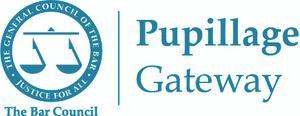
References
The specific guidance on the Pupillage Gateway is that you should use this section to provide the details of two referees, one academic and one professional. However, if you only have two academic referees, or vice versa, you may choose to use those instead. So far as is possible, it is sensible to ensure that both are relatively recent.
Provided that you have their permission to do so, you can use the same two referees for each of the applications that you make. Professional referees can include barristers that you have met during paid or voluntary employment or work experience but, again, please ensure that they have agreed to act accordingly.
Bespoke questions
The Authorised Education and Training Organisations (AETOs) that use the Pupillage Gateway to manage their respective recruitment processes can ask up to seven bespoke questions, the details of which are contained within their advertisements. Due to the volume of questions asked, it is only possible to speak to how you should approach this section in broad terms.
Firstly, it is important to remember that there are no right answers or, except for essay questions, criteria that you need to hit, but even essay questions can be answered in a wide variety of different ways.
The application process is about showing AETOs who you are as a candidate, what skills you have developed, and what insight you have, and that mindsight needs to be carried over to the bespoke questions.
As an example, if the question you are asked is ‘what law would you change, and why?’, you should respond to it by drawing on a piece of legislation that you have interacted with, or are particularly interested in, and use your response to demonstrate your insight and create a persuasive argument. You should not simply refer to a piece of legislation because you think that that particular AETO would expect you to refer to it. As with other sections, this one is about showing the reader who you are as a candidate, and not answering based on what you think barristers would want to read in your application.
As with ‘Interests and Recreational Activities’, you should ensure that you do not include anything that you cannot speak to with a degree of knowledge. This is particularly important when referring to your interactions with members of the AETO you are applying to, or cases that they have been involved in, as they could be on your interview panel and will therefore be able to identify inaccuracies in your responses. Even if they are not, members of the interview panel may well know that other barrister well and will be able to spot inaccuracies in any follow-up questions that they have.
To maximise your time and set yourself up for success, start your application early. Here’s how:
- You can create an account on the Pupillage Gateway and add to, or edit, your education, employment, and work experience history at any time.
- The Sample Application Form on the website enables you to prepare for the standardised questions you will be asked, and during the advertisement window you will be able to view and consider the bespoke questions that the AETOs that are using the Pupillage Gateway to manage their respective recruitment processes are posing.
- When preparing your answers, make sure that you make note of any character or word limits, and apply them accordingly. The character limits on the Pupillage Gateway include typographical symbols and spaces, so be careful to count them as part of your answer. Whether you write in bullet points or prose is a matter for you and the best format to use might depend on which section of the application form you are working on, but both approaches have been used successfully by previous applicants.
Further support
For further information about how to navigate the Pupillage Gateway, please consult the Applicant User Guide and FAQ on the website. If you have a technical question relating to the site that neither address, you can contact the Bar Council Services Team for assistance at [email protected].
Check out the four other blogs in the series on the extenuating circumstances, extracurricular activities and awards, education history, and employment and work experience history sections.